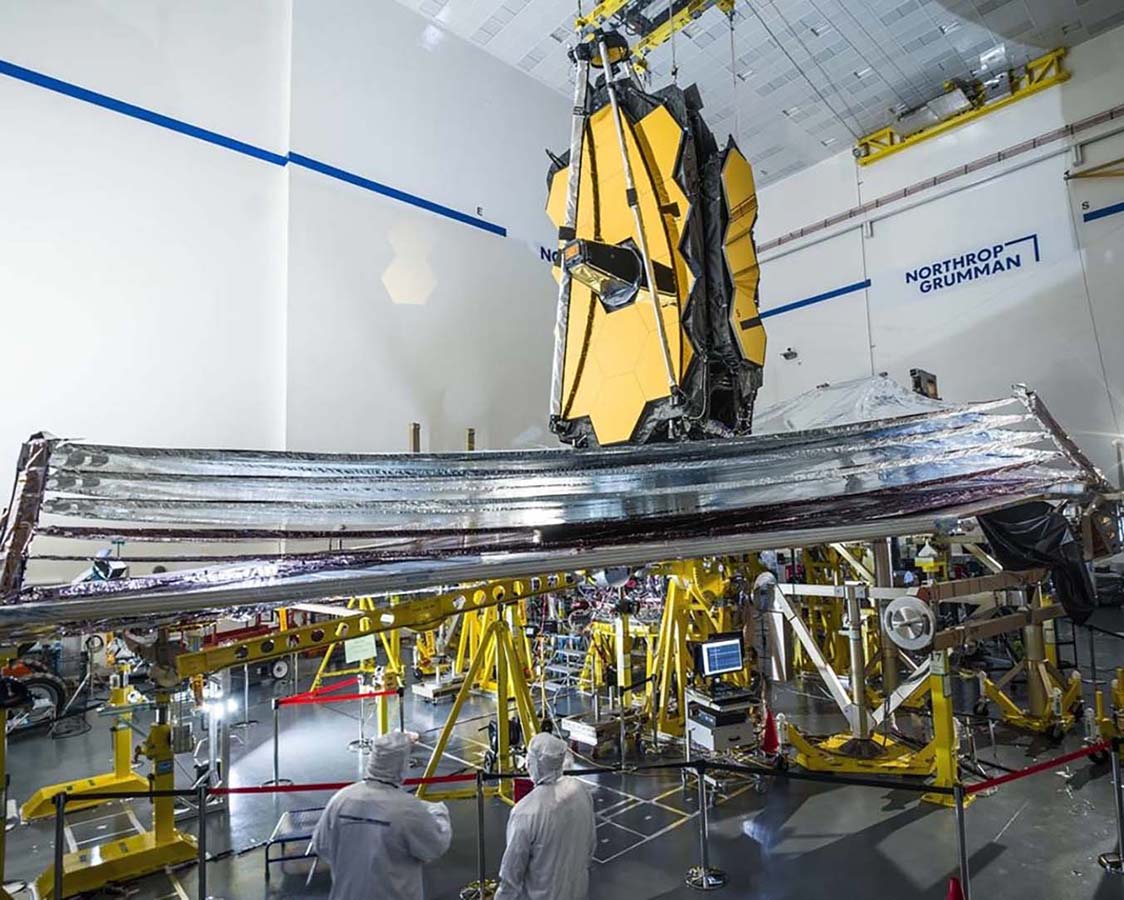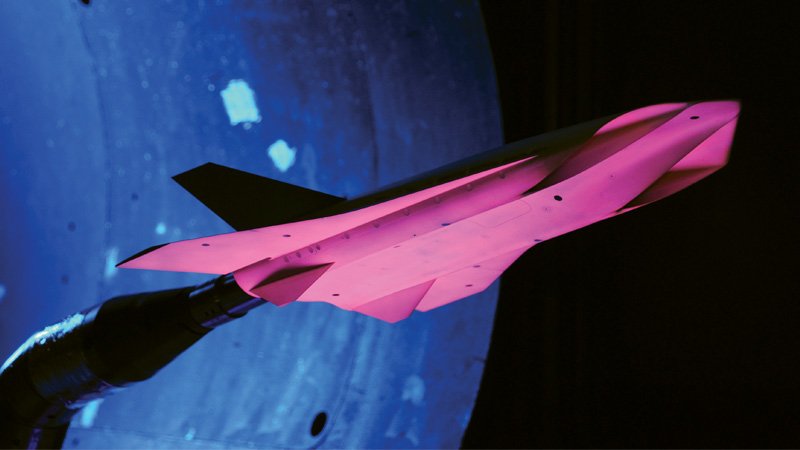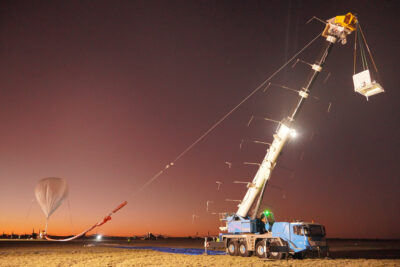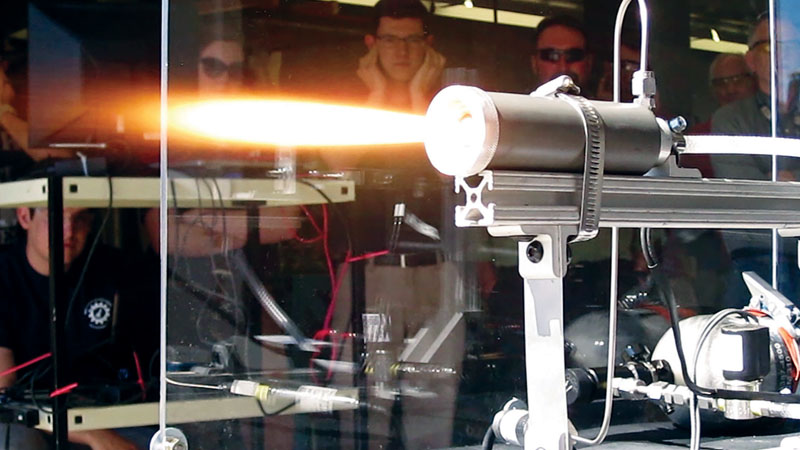Webb telescope’s massive sunshield does its job in space, development begins on the next breakthrough space structures
By Erik Pranckh |December 2022
The Spacecraft Structures Technical Committee focuses on the unique challenges associated with the design, analysis, fabrication and testing of spacecraft structures.
The development and demonstration of advanced spacecraft structures is key to realizing future objectives and enhancing capabilities in space. This year, the spacecraft structures community accomplished key milestones, raising the bar of what is possible in space and starting new development programs to field the next generation of breakthrough space structures.
A milestone three decades in the making, the James Webb Space Telescope in January completed 50 major spacecraft structure deployments, and in July, NASA released the first images from the observatory. Initially proposed in 1996, the Webb telescope was designed to explore the early phases of cosmic history with a primary mirror six times larger than Hubble’s. The Webb telescope program is led by NASA’s Goddard Space Flight Center in Maryland, and its primary contractor is Northrop Grumman Aerospace Systems. NeXolve of Huntsville, Alabama, developed and delivered the mission-critical sunshield membrane assembly, or SMA. The tennis court-sized, multilayered thin film structure was folded ahead of the December 2021 launch to stow compactly within the 4.5-meter-diameter rocket fairing.
In January, NASA fully deployed the SMA, a key step toward capturing the first images. The SMA provides crucial protection to the telescope’s scientific instruments, deflecting hundreds of kilowatts of solar energy from them to ensure they are cold enough to detect the faint infrared light the telescope was designed to observe.
“Webb required not only careful assembly but also careful deployments,” said Thomas Zurbuchen, associate administrator for NASA’s Science Mission Directorate, in a press release announcing the SMA deployment. “The success of its most challenging deployment — the sunshield — is an incredible testament to the human ingenuity and engineering skill that will enable Webb to accomplish its science goals.”
Laying the foundation for the next breakthrough spacecraft structural architecture, two development programs were initiated. In March, DARPA announced the initial study teams for the Novel Orbital Moon Manufacturing, Materials, and Mass Efficient Design program. Eight teams from industry and university research groups will investigate two key focus areas: in-space materials and manufacturing and mass-efficient designs for in-space manufacturing. The program targets in-space manufacturing of extremely large space structures operating in high orbits. Exemplar structures to be investigated are solar arrays, antennas and optical systems. The structures concepts developed will likely be unlike any seen before, as they are not bound by terrestrial manufacturing and test limitations or violent rocket launch environments. The goal is to craft structures that are fully optimized for the orbital environment, creating a new paradigm in scalability, survivability and next-generation field capabilities.
In August, NASA announced a total of $19.4 million in contracts to three companies to develop the next-generation lunar surface solar array. Astrobotic Technology, Honeybee Robotics and Lockheed Martin will build solar array prototypes and complete spaceflight qualification testing over the next two years, the goal being to launch one of the vertically deployed, retractable arrays to the lunar south pole in the late 2020s. Existing array technologies are designed for microgravity environments or horizontal deployments. To enable a sustained human presence on the moon’s south pole, vertical solar arrays with tall masts that extend off the surface are required to capture uninterrupted solar energy for lunar habitats, rovers, construction equipment and in-situ resource utilization technology. The Vertical Solar Array Technology project is led by NASA’s Langley Research Center in Virginia and the agency’s Science Technology Mission Directorate.



































